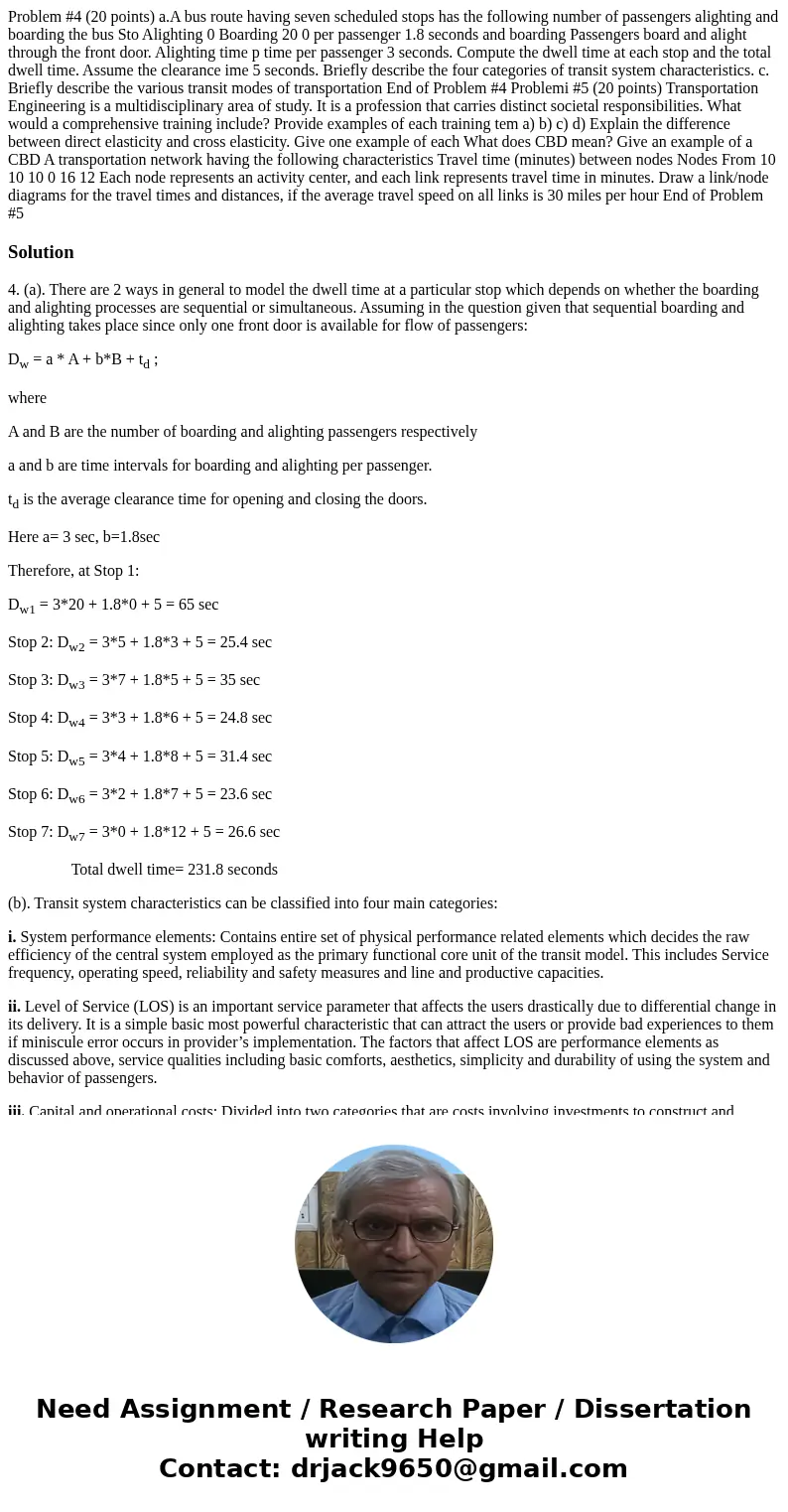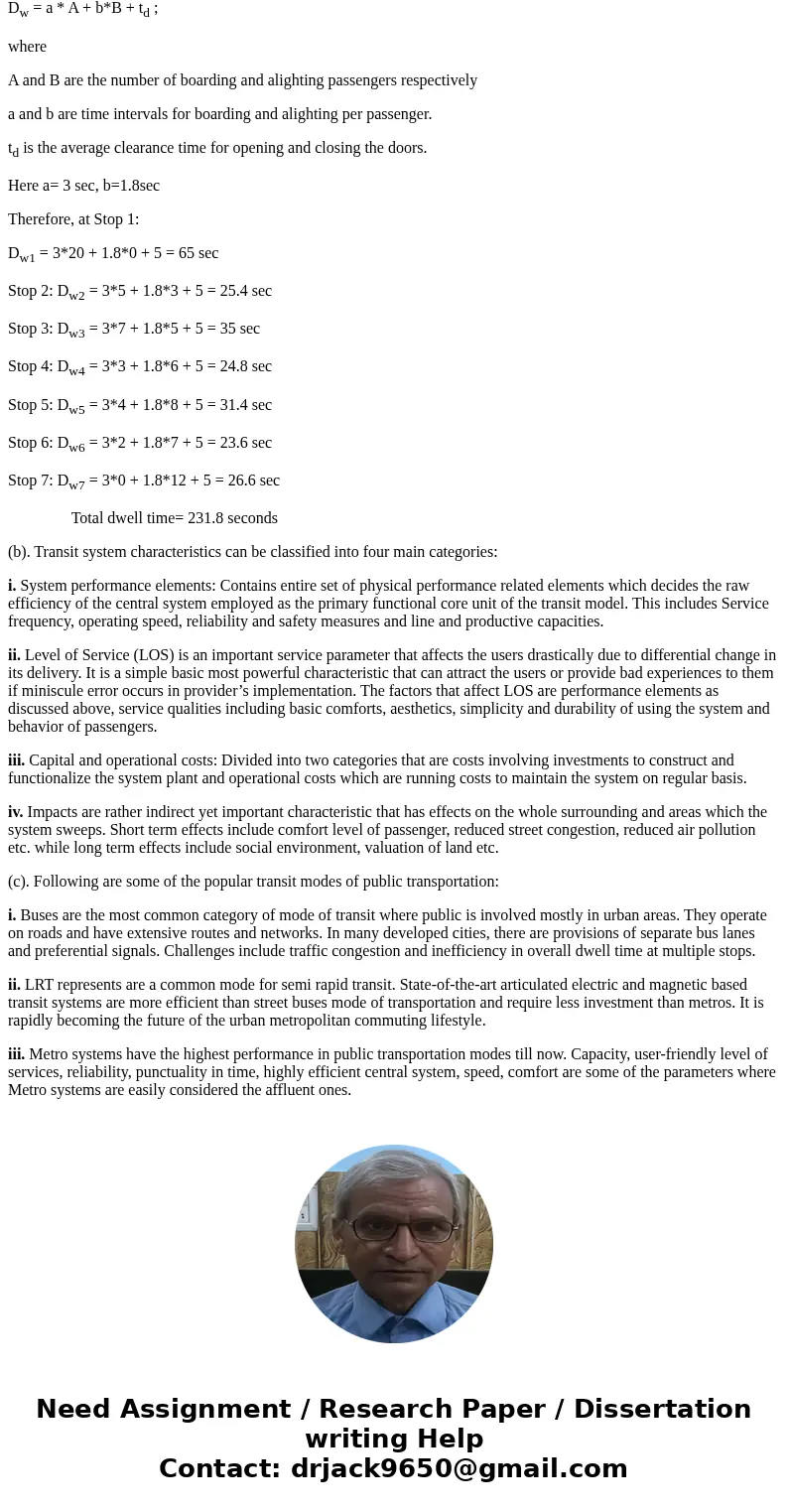Problem 4 20 points aA bus route having seven scheduled stop
Solution
4. (a). There are 2 ways in general to model the dwell time at a particular stop which depends on whether the boarding and alighting processes are sequential or simultaneous. Assuming in the question given that sequential boarding and alighting takes place since only one front door is available for flow of passengers:
Dw = a * A + b*B + td ;
where
A and B are the number of boarding and alighting passengers respectively
a and b are time intervals for boarding and alighting per passenger.
td is the average clearance time for opening and closing the doors.
Here a= 3 sec, b=1.8sec
Therefore, at Stop 1:
Dw1 = 3*20 + 1.8*0 + 5 = 65 sec
Stop 2: Dw2 = 3*5 + 1.8*3 + 5 = 25.4 sec
Stop 3: Dw3 = 3*7 + 1.8*5 + 5 = 35 sec
Stop 4: Dw4 = 3*3 + 1.8*6 + 5 = 24.8 sec
Stop 5: Dw5 = 3*4 + 1.8*8 + 5 = 31.4 sec
Stop 6: Dw6 = 3*2 + 1.8*7 + 5 = 23.6 sec
Stop 7: Dw7 = 3*0 + 1.8*12 + 5 = 26.6 sec
Total dwell time= 231.8 seconds
(b). Transit system characteristics can be classified into four main categories:
i. System performance elements: Contains entire set of physical performance related elements which decides the raw efficiency of the central system employed as the primary functional core unit of the transit model. This includes Service frequency, operating speed, reliability and safety measures and line and productive capacities.
ii. Level of Service (LOS) is an important service parameter that affects the users drastically due to differential change in its delivery. It is a simple basic most powerful characteristic that can attract the users or provide bad experiences to them if miniscule error occurs in provider’s implementation. The factors that affect LOS are performance elements as discussed above, service qualities including basic comforts, aesthetics, simplicity and durability of using the system and behavior of passengers.
iii. Capital and operational costs: Divided into two categories that are costs involving investments to construct and functionalize the system plant and operational costs which are running costs to maintain the system on regular basis.
iv. Impacts are rather indirect yet important characteristic that has effects on the whole surrounding and areas which the system sweeps. Short term effects include comfort level of passenger, reduced street congestion, reduced air pollution etc. while long term effects include social environment, valuation of land etc.
(c). Following are some of the popular transit modes of public transportation:
i. Buses are the most common category of mode of transit where public is involved mostly in urban areas. They operate on roads and have extensive routes and networks. In many developed cities, there are provisions of separate bus lanes and preferential signals. Challenges include traffic congestion and inefficiency in overall dwell time at multiple stops.
ii. LRT represents are a common mode for semi rapid transit. State-of-the-art articulated electric and magnetic based transit systems are more efficient than street buses mode of transportation and require less investment than metros. It is rapidly becoming the future of the urban metropolitan commuting lifestyle.
iii. Metro systems have the highest performance in public transportation modes till now. Capacity, user-friendly level of services, reliability, punctuality in time, highly efficient central system, speed, comfort are some of the parameters where Metro systems are easily considered the affluent ones.


 Homework Sourse
Homework Sourse